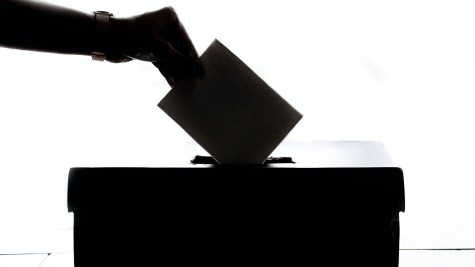The Evolution of Absentee/Mail Voting Laws, 2020 to the Present
The MIT Election Data and Science Lab helps highlight new research and interesting ideas in election science, including through research grants under our ongoing Learning from Elections program.
Our post today was written by Mandy Zoch, based on the NCSL's ongoing research funded by this program. The information and opinions expressed in this column represent their own research, and do not necessarily represent the opinions of the MIT Election Lab or MIT.
The Covid-19 pandemic affected nearly every aspect of election administration, and few areas were more subject to change than the laws that govern absentee and mail voting.
Impetus and Goals
Many states encouraged voters to use the absentee/mail voting options available to them, with some states temporarily expanding eligibility and access. These actions resulted in more voters casting ballots outside of the polling place for the 2020 primaries and general election than ever before—and generated increased scrutiny on all parts of absentee/mail voting from lawmakers, candidates, election administrators, members of the media and even voters. That scrutiny only increased in the aftermath of the 2020 presidential election.
The National Conference of State Legislatures (NCSL) tracked both temporary and permanent election law changes during the pandemic as part of NCSL’s election legislation database and overall mission to provide trusted, nonpartisan data on election administration to legislators and legislative staff. In 2021 and 2022, concerns about election integrity, fraud, security and voter access dominated the political discourse and legislators across the nation sought to expand, limit and/or finetune their state’s absentee/mail processes. Because of this sustained interest, the NCSL elections team proposed this project to build upon its previous work tracking legislation and offer a more comprehensive analysis detailing what statutory changes were made to absentee/mail voting, when those changes were made and—to the extent possible—why those changes were seen by their supporters as addressing problems created or exacerbated by the pandemic.
This project comprises three parts:
- Statutory and legislative research on absentee/mail voting laws before, during and after the Covid-19 pandemic, including a timeline and description of changes.
- A qualitative study of policymakers’ and election officials’ perspectives on those changes, to be gathered through focus groups of Republican state legislators, Democrat state legislators and local election officials.
- A final report detailing the findings from the statutory and legislative research and the focus groups.
The goal of this project it to provide lawmakers, and to a lesser extent election administrators and scholars, with accessible, nonpartisan research that can be used to understand the shifting landscape of absentee/mail voting laws from 2020 to 2022 and more effectively legislate those processes in the future.
Progress and Preliminary Findings
Our project is still in its first phase: conducting statutory research and planning the in-person focus groups that will take place in early May 2023. Much of the initial research was gathered during 2020, 2021 and 2022 as part of NCSL’s existing workflow, and the remaining tasks are to finalize the specific data points for comparison (status of absentee/mail voting, eligible excuses, ballot collection laws, receipt/postmarked deadlines, ballot cure processes, when ballot processing and counting can begin, etc.), compile NCSL’s existing research into chronological tables and gather any additional data or context that may be necessary for the report.
Two high-level findings from the research include:
- At the start of 2020, five states (Colorado, Hawaii, Oregon, Utah and Washington) conducted “all-mail” elections. For the 2020 general election, four additional states (California, Nevada, New Jersey and Vermont) and Washington, D.C. temporarily ran all-mail elections, and two states (Montana and New Mexico) authorized counties to automatically send mail ballots to all voters. In advance of the conduct of the 2022 general election, three of those states (California, Nevada and Vermont) passed legislation establishing permanent all-mail elections, bringing the total number of states conducting all-mail elections to 8. While it took over two decades—between 1998 and 2020—for five states to enact and implement all-mail elections, the pandemic seems to have accelerated the process with three states making the change in just under two years. It is worth noting, of course, that the states that made the change had been moving in that direction for years before the pandemic and that Washington, D.C. also made all-mail elections permanent in late 2022.
- At the start of 2020, 28 states and Washington, D.C. offered “no-excuse” absentee voting. (The total does not include the states that conduct all-mail elections.) During the height of the Covid-19 pandemic many states expanded absentee eligibility to all voters, yet election integrity concerns grew nationwide, raising the possibility that the 2021 legislative session would see some states curtailing absentee/mail voting by removing their no-excuse provisions. Those changes, however, did not come to pass, and no state has removed its no-excuse law. Instead, by the 2022 general election, two additional states passed no-excuse absentee voting: Virginia in 2020, a change well on its way prior to the pandemic; and Massachusetts in 2022, after having temporarily allowed no-excuse absentee voting during the 2020 general election.
Next Steps
Through March, we will be finalizing focus group logistics and completing all relevant statutory and legislative research, including the creation of easy-to-use tables for all data points. In April, we plan to finish drafting first half of the report addressing absentee/mail voting laws before, during and after the Covid-19 pandemic.
Following that, we will run in-person focus groups for approximately eight Republican state legislators, eight Democrat state legislators and eight local election officials in May. From then through June, we will synthesize findings from the focus groups and incorporate into the final report, including anonymized insights from participants. Once complete, we will present the report publicly online and in-person at upcoming conferences and other events.


